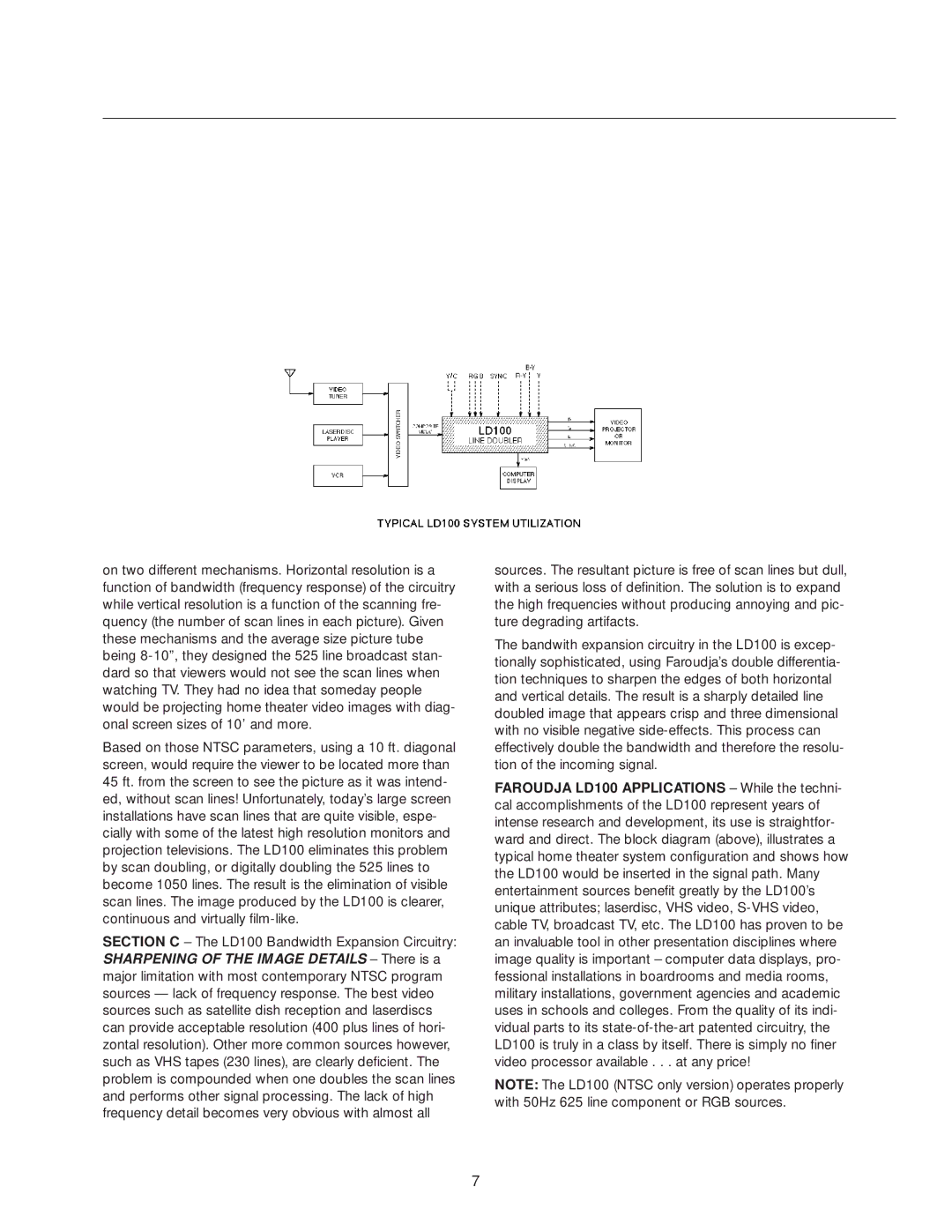
on two different mechanisms. Horizontal resolution is a function of bandwidth (frequency response) of the circuitry while vertical resolution is a function of the scanning fre- quency (the number of scan lines in each picture). Given these mechanisms and the average size picture tube being
Based on those NTSC parameters, using a 10 ft. diagonal screen, would require the viewer to be located more than 45 ft. from the screen to see the picture as it was intend- ed, without scan lines! Unfortunately, today’s large screen installations have scan lines that are quite visible, espe- cially with some of the latest high resolution monitors and projection televisions. The LD100 eliminates this problem by scan doubling, or digitally doubling the 525 lines to become 1050 lines. The result is the elimination of visible scan lines. The image produced by the LD100 is clearer, continuous and virtually
SECTION C – The LD100 Bandwidth Expansion Circuitry: SHARPENING OF THE IMAGE DETAILS – There is a major limitation with most contemporary NTSC program sources — lack of frequency response. The best video sources such as satellite dish reception and laserdiscs can provide acceptable resolution (400 plus lines of hori- zontal resolution). Other more common sources however, such as VHS tapes (230 lines), are clearly deficient. The problem is compounded when one doubles the scan lines and performs other signal processing. The lack of high frequency detail becomes very obvious with almost all
sources. The resultant picture is free of scan lines but dull, with a serious loss of definition. The solution is to expand the high frequencies without producing annoying and pic- ture degrading artifacts.
The bandwith expansion circuitry in the LD100 is excep- tionally sophisticated, using Faroudja’s double differentia- tion techniques to sharpen the edges of both horizontal and vertical details. The result is a sharply detailed line doubled image that appears crisp and three dimensional with no visible negative
FAROUDJA LD100 APPLICATIONS – While the techni- cal accomplishments of the LD100 represent years of intense research and development, its use is straightfor- ward and direct. The block diagram (above), illustrates a typical home theater system configuration and shows how the LD100 would be inserted in the signal path. Many entertainment sources benefit greatly by the LD100’s unique attributes; laserdisc, VHS video,
NOTE: The LD100 (NTSC only version) operates properly with 50Hz 625 line component or RGB sources.
7
